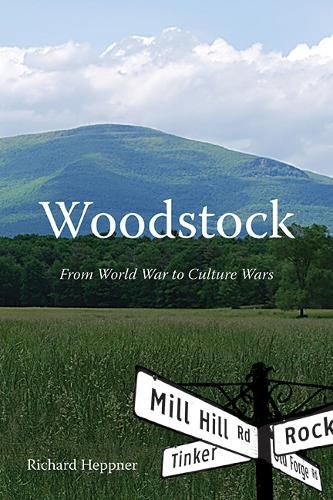Readings Newsletter
Become a Readings Member to make your shopping experience even easier.
Sign in or sign up for free!
You’re not far away from qualifying for FREE standard shipping within Australia
You’ve qualified for FREE standard shipping within Australia
The cart is loading…






This title is printed to order. This book may have been self-published. If so, we cannot guarantee the quality of the content. In the main most books will have gone through the editing process however some may not. We therefore suggest that you be aware of this before ordering this book. If in doubt check either the author or publisher’s details as we are unable to accept any returns unless they are faulty. Please contact us if you have any questions.
The story of Woodstock, N.Y., over the last 100 years and how a small, rural town coped with the many challenges of changing times.
Few towns in America are as famous as Woodstock, New York-although Woodstock may be most famous for an event that happened many miles away! Long before the 1969 Woodstock festival put the town on the map, it had been a center for artists and free thinkers who found refuge in its rural setting. Longtime citizens were often shocked by the arrival of these newcomers who brought new values and attitudes to their once-isolated village. From the transformative arrival of artists in the early twentieth century to the influx of musicians and young people in the 1960s, Woodstockers worked and struggled to balance everyday life in a small, rural community with the attention and notoriety the outside world brought to it. Presented chronologically, this text examines the nature of change within Woodstock's uncommon story as it emerges from the Great Depression, confronts the realty of World War II, moves through the 1950s and into an unimagined and unintended future with the arrival of the Sixties through today. At its core, this is a story of how Woodstock's cultural and political institutions, its citizens, and its physical landscape met the ever-changing challenges of changing times. It is a story of community, resilience, conflict, and transition into a world its early settlers could not have imagined.
$9.00 standard shipping within Australia
FREE standard shipping within Australia for orders over $100.00
Express & International shipping calculated at checkout
This title is printed to order. This book may have been self-published. If so, we cannot guarantee the quality of the content. In the main most books will have gone through the editing process however some may not. We therefore suggest that you be aware of this before ordering this book. If in doubt check either the author or publisher’s details as we are unable to accept any returns unless they are faulty. Please contact us if you have any questions.
The story of Woodstock, N.Y., over the last 100 years and how a small, rural town coped with the many challenges of changing times.
Few towns in America are as famous as Woodstock, New York-although Woodstock may be most famous for an event that happened many miles away! Long before the 1969 Woodstock festival put the town on the map, it had been a center for artists and free thinkers who found refuge in its rural setting. Longtime citizens were often shocked by the arrival of these newcomers who brought new values and attitudes to their once-isolated village. From the transformative arrival of artists in the early twentieth century to the influx of musicians and young people in the 1960s, Woodstockers worked and struggled to balance everyday life in a small, rural community with the attention and notoriety the outside world brought to it. Presented chronologically, this text examines the nature of change within Woodstock's uncommon story as it emerges from the Great Depression, confronts the realty of World War II, moves through the 1950s and into an unimagined and unintended future with the arrival of the Sixties through today. At its core, this is a story of how Woodstock's cultural and political institutions, its citizens, and its physical landscape met the ever-changing challenges of changing times. It is a story of community, resilience, conflict, and transition into a world its early settlers could not have imagined.